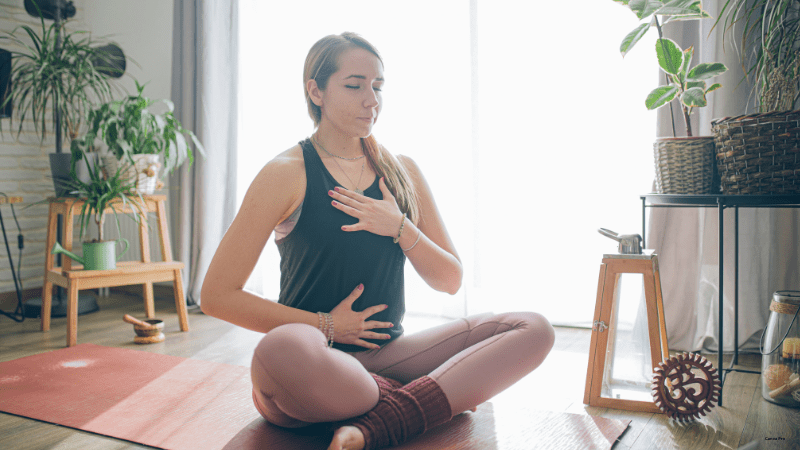Ease anxiety and stress: Master the art of belly breathing
Unlock Your Body’s Natural Calm: Transform Stress into Serenity Through the Simple Power of Mindful Belly Breathing
Consider for a moment: what are three situations that trigger your anxiety or stress? For most individuals, examples spring to mind instantly. Those experiencing anxiety disorders — including social anxiety, specific phobias, or generalized anxiety — often encounter numerous triggers that escalate their anxiety levels. While diaphragmatic breathing isn’t a complete solution for deeply rooted anxieties, it serves as an effective technique for managing everyday stress and anxiety. Regular practice of belly breathing (or implementing the simple strategy outlined below) can help transform your body’s fight-or-flight reaction into a beneficial relaxation response, activating the parasympathetic nervous system.
The importance of breathing
With approximately 23,000 breaths taken daily, proper breathing techniques are crucial for stress management and anxiety relief. Understanding different breathing patterns and their effects on our body is key to mastering effective stress reduction methods.
How should you breathe?
What’s the ideal way to breathe? Dr. Katherine Rosa from the Harvard-affiliated Benson-Henry Institute for Mind Body Medicine suggests observing a sleeping child. “Watch children while they sleep, and you’ll notice they all breathe from their belly rather than their chest. This natural, relaxed breathing pattern is actually the proper way to breathe.”
However, most adults have adopted chest breathing, a stress-related pattern often associated with shallow breathing anxiety. When facing perceived threats, our fight-or-flight mechanism instinctively activates. We begin rapid breathing to increase oxygen intake, preparing our heart and muscles for potential escape.
In modern times, we no longer flee from physical predators. Instead, our stressors come from daily challenges like overwhelming emails, interpersonal conflicts, distressing news, and frustrating traffic situations.
“The fight-or-flight response is designed to be temporary, activating and deactivating as needed,” explains Dr. Rosa. “However, in today’s world, we’re constantly bombarded by stressors that keep us in this heightened state. It becomes our new normal, often without our awareness.” Consequently, we’ve evolved into a society of chest breathers, which can contribute to anxious breathing patterns.

Feel it in your belly
To better manage modern-day stress, we can learn to shift from chest to abdominal breathing. This technique engages the vagus nerve, which extends from the head through the neck and chest, reaching down to the colon. This engagement triggers your relaxation response, leading to decreased heart rate, lower blood pressure, and reduced stress levels. These deep breathing benefits make it an excellent tool for stress management and anxiety relief.
For those unfamiliar with how to belly breathe, here’s a simple exercise: find a comfortable chair, bend forward, and rest your elbows on your knees. Then breathe naturally. “This position naturally forces belly breathing, helping you recognize how it should feel,” Dr. Rosa advises. This exercise can be particularly helpful for those experiencing anxiety about breathing or looking for breathing exercises for panic attacks.
A mini strategy to ease anxiety and stress
A practical approach to mastering mindful belly breathing is through what Dr. Rosa refers to as “the mini.” This technique is one of many effective breathing techniques for stress relief. The approach is straightforward: whenever stress surfaces, take three deliberate, slow deep breaths from your belly. “While simple, this action effectively interrupts and temporarily halts the fight-or-flight response,” Dr. Rosa explains. “With consistent practice, diaphragmatic breathing can strengthen your resilience to fight-or-flight reactions, making you less susceptible to stress triggers.”
To enhance your breathing awareness and improve breath control, position one hand on your abdomen and the other on your chest. “The goal is to keep your chest hand stationary while your belly hand moves outward, similar to inflating a balloon,” Dr. Rosa instructs. This conscious breathing technique can be particularly helpful for those dealing with anxiety.
She recommends incorporating belly breathing exercises throughout your day, aiming for hourly practice or between 10 to 15 sessions daily. “As this practice becomes ingrained in your routine, you’ll naturally transition to abdominal breathing when confronting stressful situations.” This regular practice of deep breathing exercises helps in managing stress and provides significant anxiety relief.
By mastering these breathing techniques and incorporating them into your daily life, you can effectively manage stress, reduce anxiety, and improve your overall well-being. Remember, the key to success is consistent practice and patience as you learn to harness the power of your breath as a natural calming technique.
Source:
Matthew Solan (January 10, 2025). Ease anxiety and stress: Take a (belly) breather. Harvard Health Publishing. https://www.health.harvard.edu/blog/ease-anxiety-and-stress-take-a-belly-breather-201904261861. Accessed March 16, 2025
You may also like to read:
Raising awareness and taking action to prevent suicide
Boost Brain Health: Diets That Protect Both Heart and Mind
Category
- Health Issues (69)
- Healthy Diet (46)
- Herbs for Health (11)
- Mental Health (32)
- Skin Care (20)
